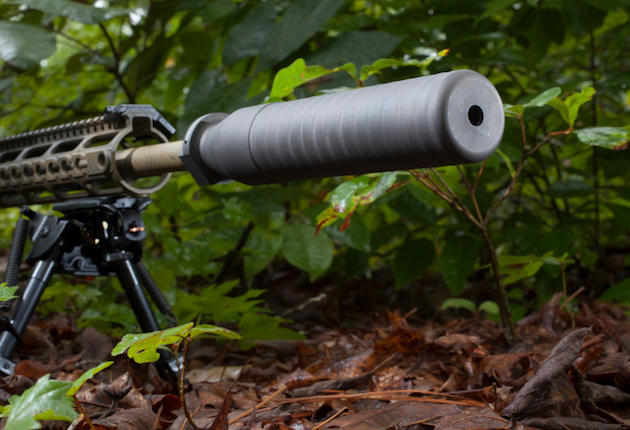Suppressors are making a lot of noise on Capital Hill. The recently introduced Hearing Protection Act is intended to cut through the legal and financial red tape associated with purchasing a suppressor — something the American Suppressor Association calls “taxation without justification.”
Congressman Matt Salmon (R-AZ) introduced the HPA bill to remove the various roadblocks between gun owners and their very own “silencer,” one of the greatest misnomers in the firearms world. Under the National Firearms Act of 1934, suppressors are currently listed alongside fully automatic guns, sawed-off rifles and shotguns, grenades, mortars, rocket-propelled grenades, and other weapons. As such, they can be owned only after registration and the payment of a special $200 transfer fee per suppressor.
If passed, the HPA would remove suppressors from the National Firearms Act would and refund the tax for anyone who purchased a suppressor after Oct. 22, 2015.
“The American Suppressor Association believes that citizens should not have to pay a tax to protect their hearing while exercising their Second Amendment rights,” said Knox Williams, President and Executive Director of the ASA. “The removal of suppressors from the National Firearms Act has been our ultimate goal since day one. For months, we have worked alongside Rep. Salmon’s office and the National Rifle Association to craft this legislation.
“Although we recognize that introducing this bill is the first step in what will be a lengthy process to change federal law, we look forward to working with Rep. Salmon and the NRA to advance and ultimately enact this common-sense legislation.”
In place of the current federal background checks used for machine guns and other devices, suppressor purchasers would undergo the same background check long gun purchasers do. The check would be instantaneous and allow purchasers to receive their suppressor the same day, rather than wait for months under the current legislation for their Form 4 application to be accepted or rejected.
The NFA of 1934 was passed under Congress’ tax powers, but revenue generation was not the main goal. The transfer fee is essentially a “sin tax,” the higher-than-usual sales tax placed on items like cigarettes to deter users from purchasing them. The hope was to curtail the purchase of machine guns and other weapons, and if not, to collect payment for the purchase.
Suppressors were easily obtained prior to their inclusion in NFA. According to a National Shooting Sports Foundation fact sheet, suppressors could be mail ordered and delivered directly to a shooter’s home.
Suppressors benefit shooters of all kinds — target shooters, hunters, rimfire plinkers, etc. Despite Hollywood’s claims to the contrary, suppressors do not silence a gun. The report of the shot is greatly reduced, though — 20-35 decibels lower on average, the same benefit as wearing earmuffs or plugs, according to the ASA. Subsonic ammunition can further reduce the report by preventing the round from breaking the sound barrier (the familiar “crack” from the shot).
“Suppressors significantly reduce the chance of hearing loss for anyone who enjoys the shooting sports,” said Chris Cox, executive director of NRA’s Institute for Legislative Action. “On behalf of the NRA and our 5 million members, I want to thank Rep. Salmon for his leadership on this important bill.”
NSSF’s fact sheet also highlighted lower muzzle jump and recoil as suppressor benefits.
According to the NRA-ILA, 41 states currently allow citizens to own suppressors; 37 states also allow the use of suppressors for hunting. Other states may follow suit if the HPA is passed.
Gun control advocates frequently point to European gun laws as better than the United States’, and for once they should: According to the ASA, Europe does not restrict the purchase, possession, or use of suppressors. Shooters are encouraged to shoot with suppressors to avoid disturbing neighbors who do not appreciate the sound of firearms firing.
Whether a sportsman chooses to utilize a suppressor or not, the bill marks a significant move toward greater gun rights.
Cover Image: Thinkstock

